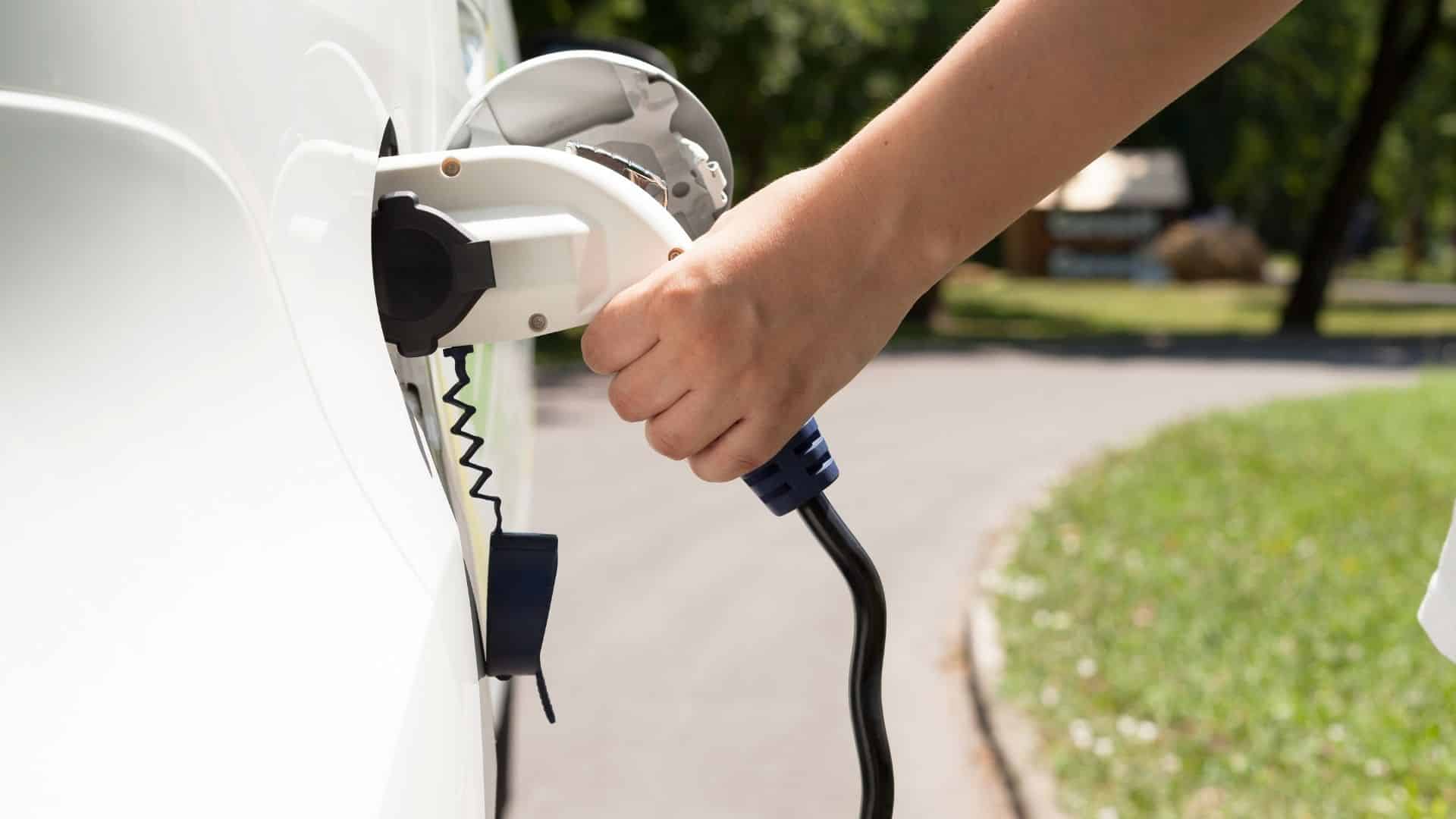Oregon Electric Vehicle Incentives Are Here!
Gas prices seem to be climbing every day. If you’re looking to break free from the gas pump, Oregon provides an affordable way to get an electric vehicle so you can save money on gas and help the environment!
What Incentives are Available?
There are many incentives to get an electric vehicle or to install an electric charging station in Oregon. These include state rebates, utility rebates, and tax credits that make an electric vehicle more affordable.
In addition to incentives that lower the up-front costs of purchasing an electric vehicle, there are other reasons to replace your gas vehicle with an electric one.
For instance, you can combine local, state, and federal incentives and manufacturer deals to get the best price. You’ll also save big at the gas pump and burn cleaner energy.
Oregon EV Rebate
Oregon uses a rebate system to make electric vehicles (EV) more affordable. Rebates are a portion of a sales transaction that gets returned to the customer after the operation is closed, incentivizing the customer by rewarding their purchase with an amount of the transaction value.
Oregon Department of Environmental Quality has several programs where citizens and businesses can apply. And with recent regulation adjustments, these programs make it easy for all income households to purchase or lease an EV.
The Oregon Clean Vehicle rebate and Charge Ahead rebate programs aim to save customers as much money as possible. Altogether these incentives can bring the price of your electric vehicle down by almost half its initial value. These incentives apply to buying or leasing an EV.
However, these incentives are only applicable for qualifying new or used cars.
There are three options for this program, each detailed below.
Standard Rebate
Oregon residents, businesses, non-profits, and government agencies can benefit from this rebate option. Electric motorcycles, new battery EVs, and plug-in hybrid EVs with an MSRP under $50,000 are also eligible.
No income is required to apply for this rebate. However, you must submit your application within six months after your purchase or lease date for the vehicle.
But if you qualify for and claim this rebate, your rebate amount can reach $750 for zero-emission motorcycles. For vehicles with a battery under 10kWh, your rebate amount would be $1,500. Rebates for cars with a battery of 10 kWh and over would be $2,500.
Charge Ahead Rebate
The Oregon Charge Ahead Rebate for 2022 can aid residents and non-profits that provide low- to moderate-income services. This option also only covers electric vehicles. It does not cover motorcycles.
These EVs must be new or used battery EVs. Plug-in hybrid EVs with an original base MSRP under $50,000.
You must meet income requirements, but these will vary depending on when you made your purchase or lease of your electric vehicle.
If you qualify for and claim this rebate, you are looking at a rebate amount of $2,500 for vehicles purchased or leased before Jan. 1, 2022. If you bought or leased your vehicle on or after this date, your rebate amount would be $5,000.
Remember that you must submit your application for this rebate within six months of your purchase or lease date. This program particularly supports lower-income households and individuals who purchase used electric vehicles.
Standard and Charge Ahead Rebate
The same groups eligible for the Charge Ahead rebate qualify for the Oregon standard EV rebate. They must be new EVs with a base MSRP under $50,000. You will need to meet income requirements depending on purchase or lease.
You can use their Income Eligibility Calculator to see your income eligibility.
If you qualify for and claim this rebate, you would receive a rebate amount of $4,000 for a battery under 10 kWh. That amount jumps to $5,000 if the battery in your EV is 10 kWh or more.
However, these rebate amounts apply to vehicles purchased or leased before the first of January 2022. The rebates on cars bought or leased after this date would be more substantial.
Federal EV Tax Credit
On top of all these local and state incentives, you can also add the Zero Emission Vehicle Incentive Program to your savings. The federal EV tax credit gives every car manufacturer’s eligible plug-in vehicles a tax credit of up to $7,500. However, once a certain number of cars per manufacturer are registered, their credit will be reduced and phased out.
You may be wondering if you can stack several of these incentives for your vehicle. The good news is you absolutely can! Maximize your new electric vehicle savings by combining local, state, and federal incentives.
You can also research leasing options to see how leasing an EV will add to your savings. This is something you can research in your particular car manufacturer. Certain manufacturers will have better lease deals than others. You should also consider the ideal vehicle for your needs.
Altogether, you can save thousands of dollars on your new vehicle, both short-term and long-term
Incentives for EV Charging Stations
Of course, you can’t have an electric vehicle without access to an EV charging station. Charging stations are available in certain areas. However, having chargers at home or work is far more convenient and saves you time.
Most electric vehicles come with a Level 1 charger. However, Level 1 chargers don’t charge at a fast rate. Level 2 chargers and above make overnight charging easy. They even allow room to charge multiple EVs in a reasonable time.
Most importantly, EV chargers draw from the electrical grid or your Enphase solar battery system to charge your vehicle. Using these chargers makes you more than likely to raise your electrical bills substantially.
Solar-powered chargers become an even more valuable home or workplace accessory when you have an electric car. These chargers are more environmentally friendly and allow you to charge EVs even during a power outage.
Utility incentives make installing charging stations affordable as well.
Utility Rebates for EVs & Charging Stations
You might be eligible for utility rebates. Depending on your electricity provider, you might qualify for utility rebates. Some of these cover the vehicles themselves and charger installations. For example,
- Active Ashland Electric utility users can apply for a $1,500 rebate for registering qualifying new or used battery EVs.
- Active businesses can receive a $500-$1,000 rebate for installing a charger at the workplace.
- Idaho Power provides opportunities for eligible businesses to apply for funding to install charging stations. This funding applies to many kinds of EVs.
- Springfield Utility Board offers a $500 rebate for residents who install a Level 2 EV charger.
Check your electricity provider first to see what programs they offer and how to apply or contact us to learn more.
Can I use solar incentives to help pay for my car charging station?
Yes, but only when you are also installing a brand new solar electric installation. Because the car charging station is part of the system and will be included in the final cost. Learn more about Oregon solar incentives.
Our Recommendation: ClipperCreek Charging Stations for Home or Commercial Use
ClipperCreek is America’s most popular choice for electric vehicle charging, and for good reasons:
- They provide their services through Enphase. Enphase is a leading global energy tech company that utilizes solar systems.
- They provide excellent customer service to help you find the perfect charger.
- Their buyer’s guides help you find the best charger for the location of your charging station. You may need a different charger for a commercial, residential, or workplace.
Clippercreek’s Level 2 charging starts at an affordable $329 and comes with a 3-year warranty. Their 32A charging station charges up to 7x faster than the chargers that come with your electric vehicle. Every charging station has a standard 25-foot charging cable, which can reach multiple cars in a parking configuration.
ClipperCreek Charging Stations Benefits
The best features about Clippercreek’s charging stations are how accessible they can be for residential customers. Each station is safety tested, certified, and fully sealed to withstand extreme weather.
So whether your EV is in your garage or driveway, you can get a charge no matter your charger’s conditions.
Even better, each ClipperCreek charger requires no assembly or pre-wiring. Instead, it charges you the same day of your installation. If you don’t believe the hype, check out their customer testimonials!
Powering Your ClipperCreek EV Stations With Solar
ClipperCreek is a division of Enphase, a leading global energy tech company. This makes ClipperCreek chargers run off of solar energy, so you save even more money in the long run.
In addition, your chargers come with all the environmentally friendly benefits of other solar-powered chargers. Choosing an EV creates more sustainable energy sources in your area. You contribute to reducing greenhouse gas emissions. Another benefit to EVs is you can charge your vehicles during power outages.
Get a Free EV Charging Station Installation Quote
If you are ready to install a new electric vehicle charger, we recommend claiming your free quote from Sunbridge Solar! Depending on the utility rebates available, you can also save on your ClipperCreek installation. There are many reasons to switch from a gas-powered vehicle to an EV! Use these incentives to save money today.


